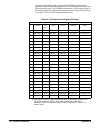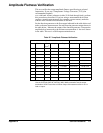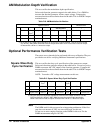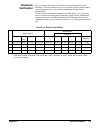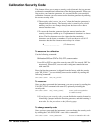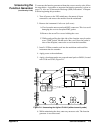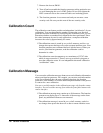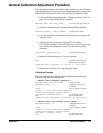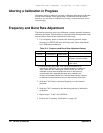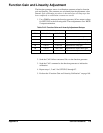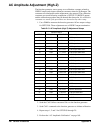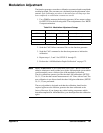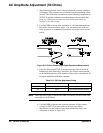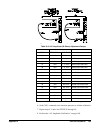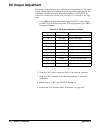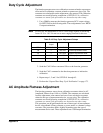
178 Service Procedures
Appendix D
<read the CAL? response; "0"=cal OK, "1"=cal error>
Aborting a Calibration in Progress
Sometimes it may be necessary to abort a calibration after the procedure has
already been initiated. When performing a calibration from the remote
interface, you can abort a calibration by issuing a remote interface device
clear message.
Frequency and Burst Rate Adjustment
The function generator stores two calibration constants related to frequency
and burst rate output. The constants are calculated from the adjustment value
entered and are stored at the completion of each setup.
1. Use a frequency meter to measure the function generator output
frequency for SETUP 00 in the following table. These adjustments
use a 50Ω output termination.
2. Send the CAL:VALue <measured frequency> to the function
generator.
3. Send the CAL? command to the function generator to initiate the
calibration.
4. Repeat steps 1, 2 and 3 for SETUP 01.
5. Perform the “Frequency Verification” on page 167.
Table D-11. Frequency and Burst Rate Adjustment Setups
Nominal Output
SETUP FREQUENCY AMPLITUDE
00
a
a. A new calibration (SETUP 86 - Rev 4.0) has been added as an
alternative to SETUP 00. The new calibration outputs a 10 MHz sine
wave, rather than the 1 MHz signal used for SETUP 00. The new
calibration reduces slew rate dependent errors in the frequency
measurement and is especially important when calibrating the
Phase-Lock Assembly (Option 001). Note that either setup is sufficient
to calibrate the carrier frequency and you don’t need to perform both.
1.00 kHz 10 Vpp Adjustment for main frequency
generator, sine wave output
01 500 Hz 10 Vpp Adjustment for burst rate timing,
pulse output.



